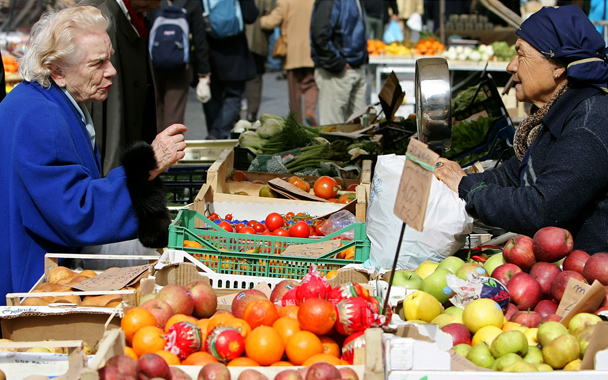After the question “what do you grow,” most conversations at Slow Food’s Terra Madre conference this year came around to marketing. And it seems that at least on many levels, the U.S.—the capital of capitalism—is ahead of the game. As I talked with farmers from the Piemonte region of Italy, they all expressed fascination with American-style farmers markets, which are rare in their country.
This is surprising, since Europe is littered with open-air markets. Certainly they are regular features in many of the piazzas of Turin, with plenty of vendors selling local food. What is different is how these markets are set up and regulated. Though Italy has markets, it has fewer “farmers markets” than we have in the U.S.
Instead of farmers selling their produce directly to customers, most markets, at least in Northern Italy, are filled with peddlers who buy produce from farmers at wholesale prices and then resell it in the piazzas. In addition to locally grown products, the peddlers also often sell items ranging from pineapples to Chinese-made sunglasses. In other words, many Italian outdoor markets are simply supermarkets on the street.
In the U.S., by contrast, farmers markets are first and foremost about farmers: The farmers take their own goods (or those of neighboring farmers) to market, where they interact with customers and answer questions about how their food was grown. And an increasing number of American markets have strict rules governing the distance that can be traveled from the farm.
There’s a growing movement in Italy to bring in more American-style markets; at Terra Madre, the mayor of Turin said he wants to host some in his city. In many ways Slow Food has helped open up this desire in Italy by emphasizing the role of consumers as co-producers: It is no longer enough for us to simply buy food at a market; we must now build relationships with the farmers that grew the food, learn about how it was produced, and encourage good production practices. How else are we going to have food that is “good, clean and fair?”



 Pinterest
Pinterest


